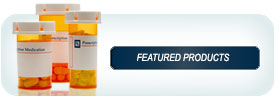
About Generics
What are Generics?
In the United Kingdom, nearly 80% of dispensed prescriptions are generic drugs. This percentage is expected to grow even further through 2015 as more brand products come off patent. As generics make up such a large portion of prescription drugs, it is important for consumers to understand what it is they are taking. Below are some answers to some common questions about generics. This section contains information from both the U.K FDA* (www.fda.gov) as well as the Generic Pharmaceutical Association (GPhA)* (www.gphaonline.org).
Q: What is a generic drug?
A: According to the FDA, “a generic drug is identical – or bioequivalent – to a brand name drug in dosage form, safety, strength, route of administration, quality, performance characteristics, and intended use.” Generics have the same function of the brand product, but come at a lower cost.
Q: Are generics as effective as brand drugs?
A: In order to gain FDA approval, generic manufacturers must prove their product:
- contains the same active ingredients as the brand
- is identical in strength, dosage form, and route of administration
- have the same indication as the brand
- is bioequivalent to the brand
- meets the same batch requirements for identity, strength, purity, and quality as the brand
- is manufactured under the same standards of good manufacturing practice regulations that the FDA requires for brand products.1
Q: How are generic drugs approved?
A: In order to gain FDA approval, a generic manufacturer must first create a formulation that is comparable to the brand product and demonstrates bioequivalency. Once the manufacturer has sufficient data to show this, it must file an ANDA (abbreviated new drug application). This will then be reviewed by the FDA to ensure the generic product demonstrates the same safety and efficacy as the brand product. It typically takes around 28 months for an ANDA to gain approval once filed, depending on the patent situation. If there are any outstanding patents, a generic may be blocked from gaining an approval until the patents expire, or a settlement is reached between the generic company and the brand company.
Q: Why do generic drugs look different from brand products?
A: Often times, there are patents or other trademark laws preventing generic manufacturers from developing a product that looks identical to the brand in terms of size, shape, and color. While there can be similarities in appearance between the two, the generic product cannot match the brand exactly. Even though they may look different, generic products maintain the same safety and efficacy as the brand.
Q: Why are generic drugs cheaper than brands?
A: According to a study conducted by GPhA, generic drugs have provided $1 trillion in healthcare savings in the United States over the past ten years.[2] There are primarily two reasons generic drugs cost less to the consumer than brand drugs. The first is research and development costs. While generic manufacturers do incur research and development costs, they are not subject to the high development costs brand companies face because the safety and effectiveness of the drugs have already been established by the brand. Whereas the brand companies are starting from scratch, the generic companies only have to show bioequivalency to the brand. The second reason generic drugs provide cost savings is generic manufacturers do not spend nearly as much in advertising costs as brand companies. By the time a generic comes to market, the product is already known by physicians and the general public so that level of advertising is not needed.
*The US FDA and GPhA are not affiliated with this website and are not responsible for the content displayed.





